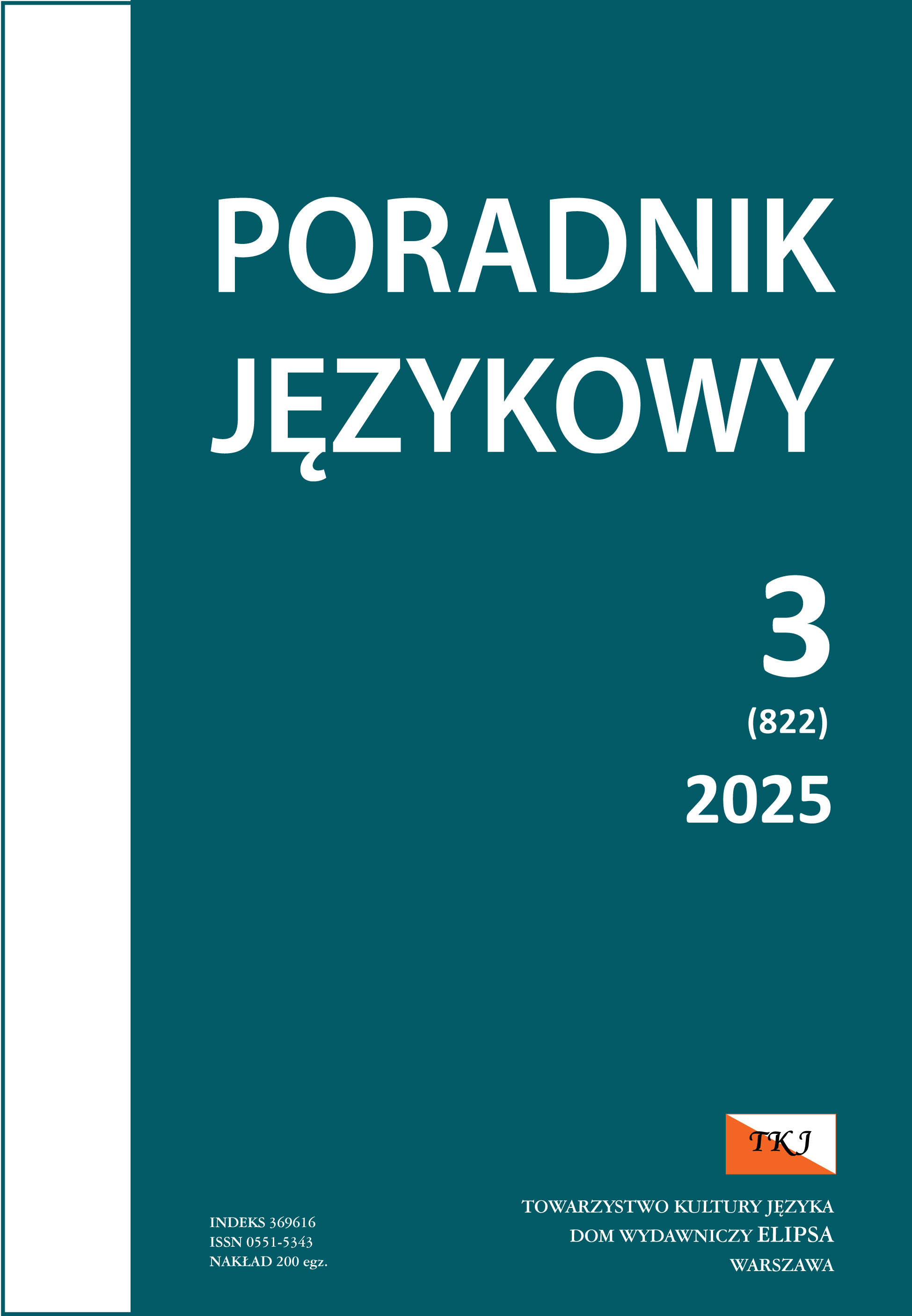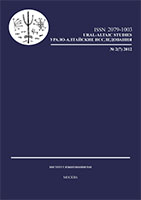
We kindly inform you that, as long as the subject affiliation of our 300.000+ articles is in progress, you might get unsufficient or no results on your third level or second level search. In this case, please broaden your search criteria.

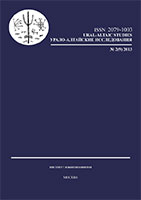
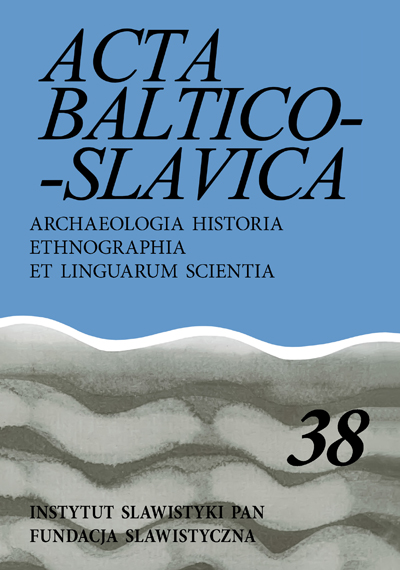
This paper discusses the development of several Lithuanian prefixal verbs (su-bradžióti ‘to do a wrong thing’, iš-skìlti ‘to strike spark’, at-vérti / už-vérti ‘to open / to close’, iš-réikšti ‘to express’, ap-àkti ‘to go blind’) and their relation to simplex forms (bradžióti ‘wade; do a wrong thing’, skìlti ‘to strike spark’, vérti ‘to thread; to prick; to open; to close’, réikšti ‘to express, to mean’, àkti ‘to go blind’). What these forms have in common is deprefixation, a kind of retrograde derivation exemplified by subradžióti → bradžióti.
More...
This article presents specific dictionary analytisms and idiomatic phrases used in the Polish language of Kurier Wileński in the interwar period. I have found 50 dictionary analytisms (7 citations included) and 5 idioms (1 cita¬tion included). Amongst specific analytisms the Russicisms dominate: 31 items. Older Polish vocabulary creates a large group: 10 items. Six out of these phrases stand for recessive elements, four – are a part of obsolete lexis. One ephemeral unit (narzędzia moczowe) and one regionalism (skład apteczny) have appeared. The genesis of 5 unique idiomatic phrases excerpted from Kurier Wileński is shown in a following way: 3 Russicisms, 1 Ukrainian or Bielarusian borrowing (duby smalone), 1 idiomatic phrase of an unknown origin (ruszać się jak mucha w śmietanie). The textual frequency of appearance of all the collected peculiar lexical phenomena was in total 81 examples. As the analysis denoted, in the second decade of the period between the Wars the language of the editors of Kurier Wileński was less saturated with uniqueness than in the first ten years after the First World War. It could be – yet in the weak form – the result of contact of the Vilnius Region with ethnic Poland lands within one country.
More...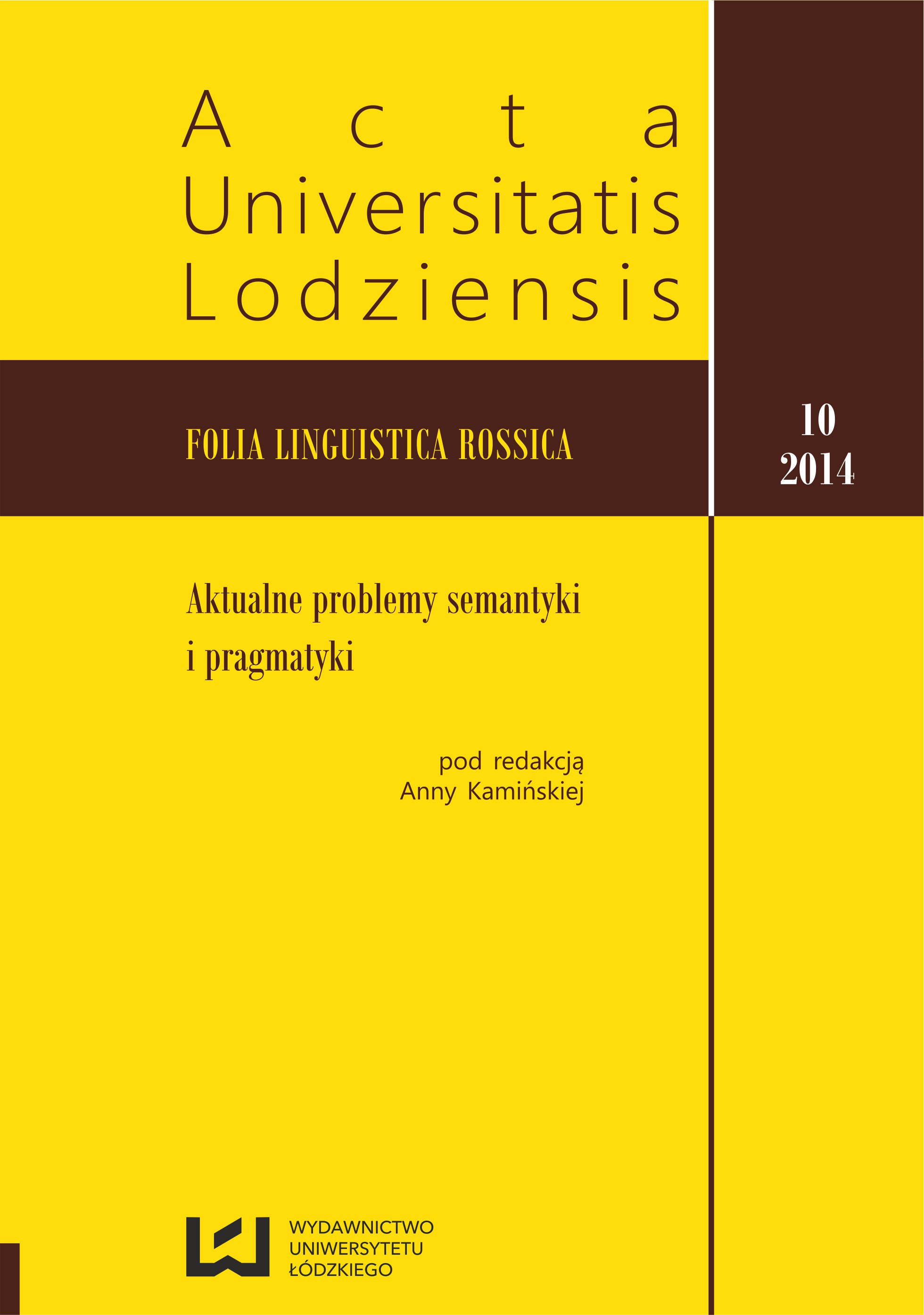
In the present paper there are shown different types of abbreviations that convey the Sovietperiod reality. As it is proved in the contemporary dictionaries, many of such words and structures are still in use today. However, some abbreviations are recognised as obsolete. With the status of historicisms, they became the prove of bureaucratic paperwork that grew in the Soviet era. In thehistory of Russian language numerous abbreviations, such as ЧК or НКВД, became the symbols ofthe Soviet repressive past.
More...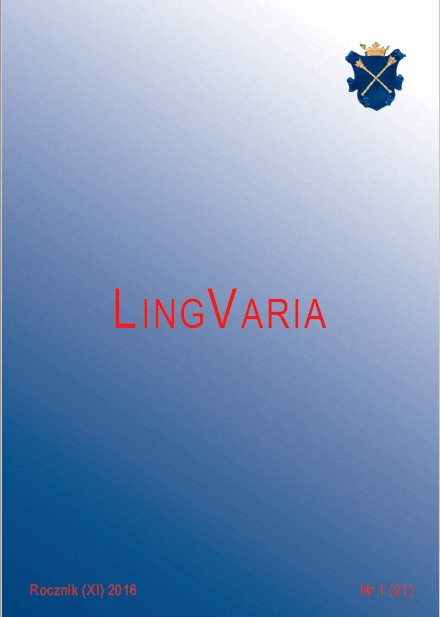
Our goal is to follow and analyse the development of mathematical linguistics in Russia and in the USSR. The first application of mathematical methods, primarily statistical, occurred in Russia already in mid-B<th century; however a true bloom of mathematical linguistics happens in mid-7;th century, owing to the initiation of intensive research into machine translation. Both the rapid development of machine translation in the initial phase, and later curtailment of research due to considerable financial limitations, has a political-historical justification. We finish our description of the history of linguistic research with the use of mathematical methods with the moment of the collapse of the USSR. Additionally, we show the evolution of the methodology of scientific research within mathematical linguistics
More...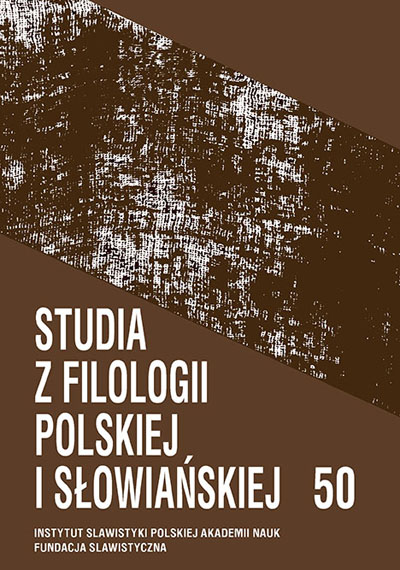
In this article, new etymologies are proposed for several Old Russian chronicle toponyms: Vĭlěna: Slav. *vĭl- 'surge'; Vŭrgolŭ: the onomatopoeic stem vŭrg-, richly represented in Russian dialects; Losna: *lŭskĭnŭ(jĭ) 'shining'; Neščerda: the prefix Ne- + the frequent Baltic toponymical stem skerd-; Tunegŭ: *touk-n-'fertile' + the suffix -eg-; and others.
More...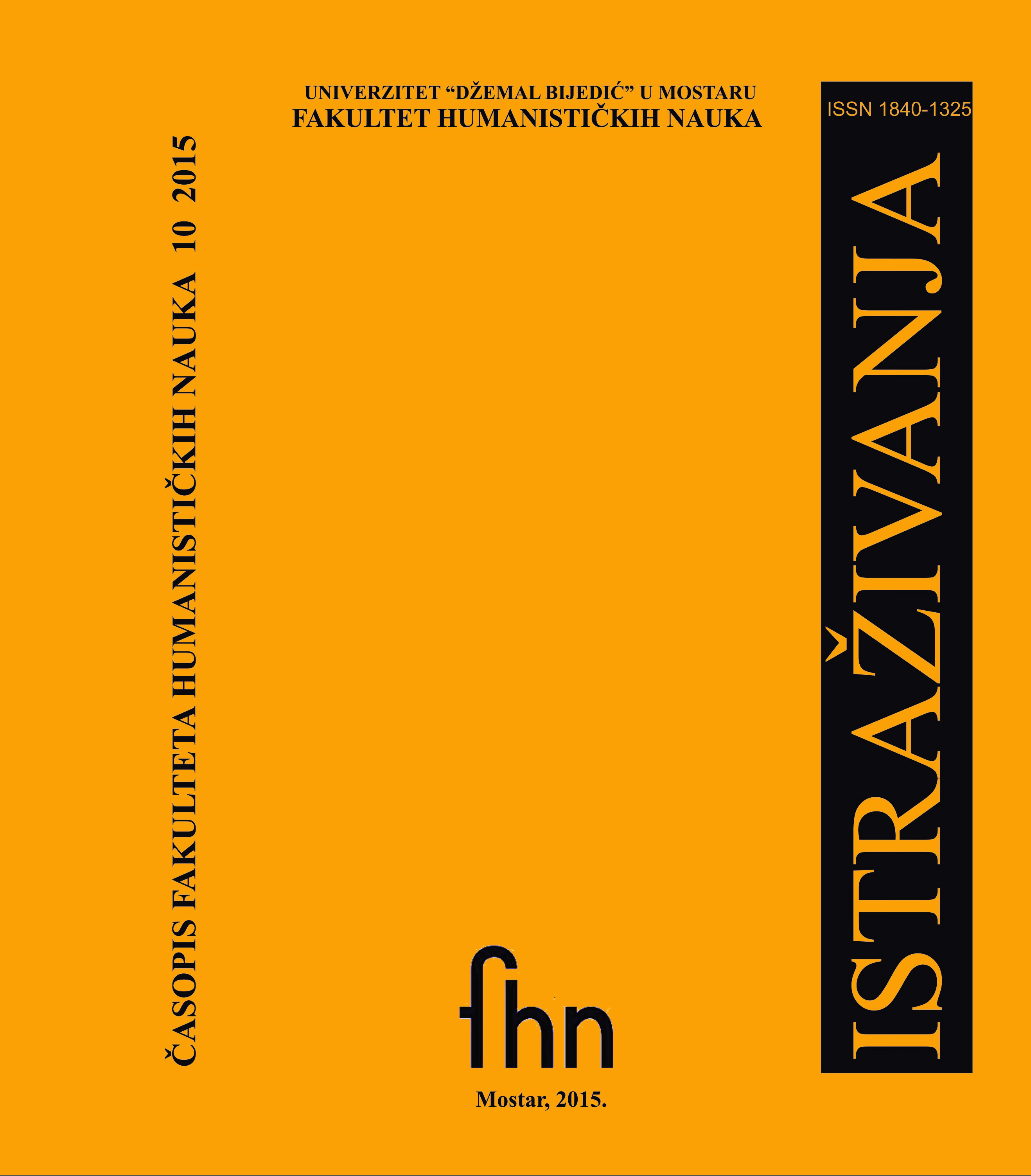
This paper analyzes the structural characteristics of male and female names confirmed in the manuscript collection of folk songs that were recorded in Tešanj area. Structural features of names are compared with the situation in the today's language.
More...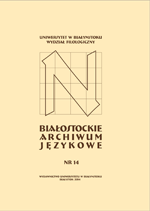
The article contains the characteristics of one the nineteenth century sources of "Słownik gwar polskich" [Dictionary of Polish Dialects] by Jan Karłowicz, i.e., the dictionary written by Antoni Waga titled "Abecadłowy spis wyrazów ludowego języka w okolicach Łomży, Wizny i przyległych" [Alphabetic List of Words of Folk Language from Łomża, Wizna and the neighborhood] published in the second volume of a scientific journal “Warsaw Library” for 1860.
More...
This part of the review is devoted to the Polonisms section. The paper discusses the general dictionary concept and vocabulary selection principles. The Polonisms section includes lexical borrowings both from the Polish language and through Polish from other, predominantly European languages and through the Ruthenian language. The structure of a dictionary entry involves both traditional vocabulary areas, such as grammatical information, interpretation, illustrating quotations and references to sources, and areas specially provided for the historical dictionary of borrowings: phonetic and morphological variants of loan-words adaptation, hapax legomena indication, etymological references, taking into account the route of borrowing, Polish as an intermediary language indication, first fixation sources’ character. The sources used in the dictionary, vocabulary volume, and the chronology of lexical borrowings starting from the earliest fixations are characterized. The article pays special attention to the work with etymological dictionaries and etymological issues in general. It also estimates the role of Polish as both a source and intermediary language through which Russian assimilates European vocabulary, taking into account repeated borrowings previously loaned directly from Greek and in the Mid-Russian period borrowed through Polish again. The etymology of certain loan words is clarified, the problem of Ruthenisms and prostaya mova as another intermediary source of loan Polonisms is highlighted. The article discusses patterns of phonetic and morphological adaptation of Polish vocabulary and demonstrates, according to the dictionary materials, some semantic clarifications and additions to the list of semantic Polonisms. It also highlights the dictionary’s capabilities as a source of additional historical, lexicographical, philological, and cultural information. Considering the thematic stratification of borrowed vocabulary, the authors indicate the most numerous thematic groups of Polonisms. In the paper’s conclusion, the prospects of further improvement of the dictionary and its whole concept for Russian historical lexicography are evaluated.
More...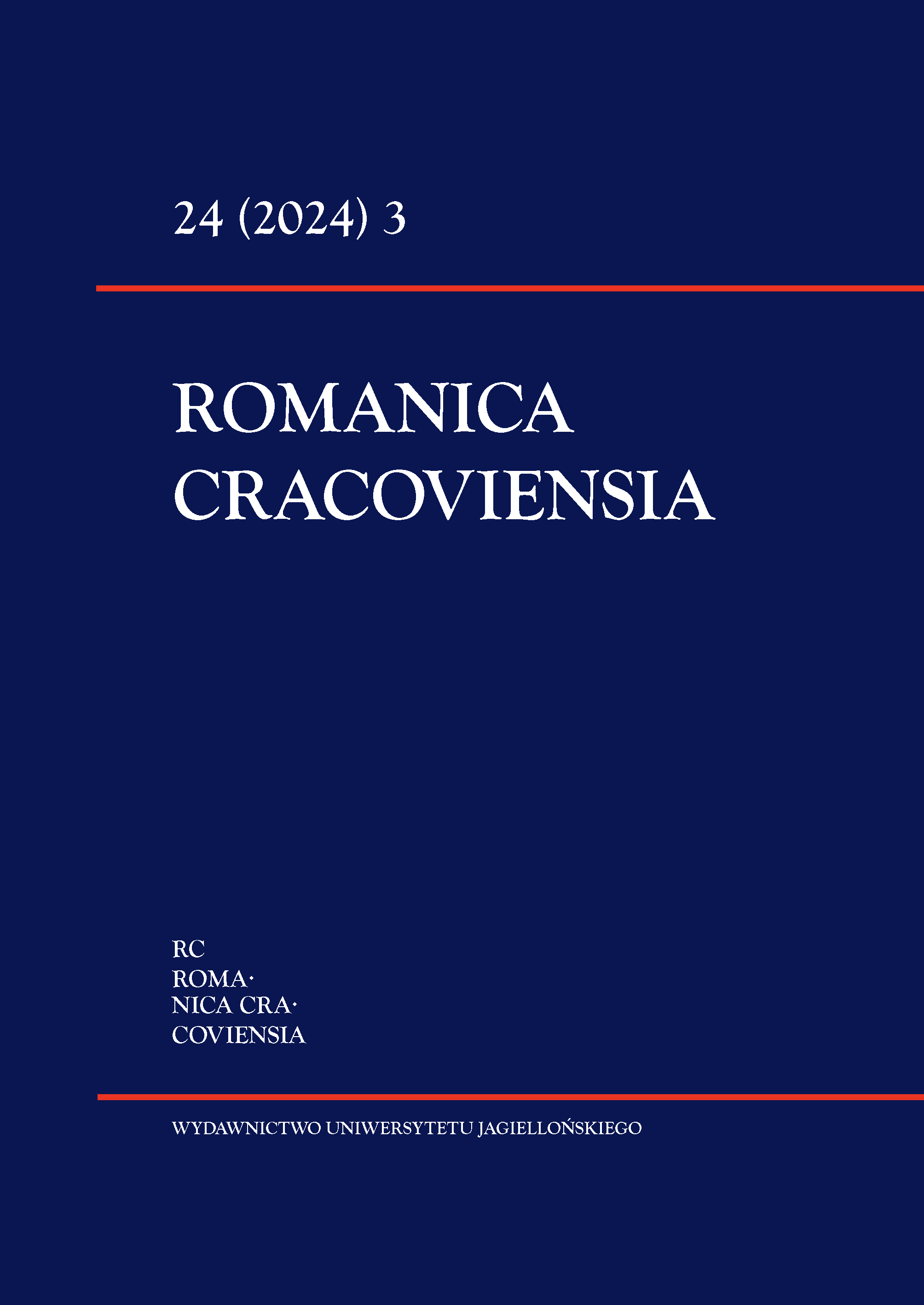
This article addresses the significance of studying heritage languages in Europe, as well as their generaldevelopmental trends, offering the example of heritage Romanian spoken in France. We present inparticular some results of a project (International Research Network), funded by CNRS and conductedin France since 2020. This involves a situation of linguistic contact where both languages– the domi-nant language and the heritage language– are Romance languages. The studies undertaken within theframework of this project focus on the syntax and morphology of heritage Romanian in school-agechildren (6–14 years old), and document the existence of vulnerability points particularly at the syntax-morphology and syntax-discourse interfaces. We discuss here the results concerning case marking anddifferential object marking.
More...
Languages vary as to whether subjects must be overtly expressed. Much research has focused on howthis phenomenon is acquired by monolingual and simultaneous bilingual children. For the latter, nu-merous studies have examined the acquisition of (null) subjects in Romance-English bilingual children.Just a few studies have considered the simultaneous acquisition of German and Spanish/Catalan, theformer being recently described as a partial and the latter as consistent null subject languages. Our re-sults with thirty Catalan-German children (Ø 5;8) living in Germany indicate that null subject rates, onaverage, are similar to the monolingual group and are independent of language dominance. Results on(a) subject type, position and (b) age, language dominance, HL-proficiency are examined.
More...
The presentation of the word križ’s earlier etymologies and their evaluation have shown partly outdated interpretations of linguistic phenomena, lack of linguistic-historically founded interpretations, lack of basic methods and principles of contact linguistics, neglect of the elaboration of mentioned initial forms, uncritical treatment of chronological facts. Some, but not all, of these facts can be explained by the fact that almost all essays are dictionary articles or short parts of longer treatises. By critically examining the previous etymologies of križ and looking at the results and methods in recent linguistic and historical research, I present a different etymology of križ. It diverges in several aspects from previous opinions.
More...
While in Modern Hungarian labial harmony is confined to short front non-high vowels, in Late Old Hungarian some suffixes including non-high long vowels were also able to undergo labial harmony. This paper discusses three of the most widely attested suffixes in question, the ablative, the delative and the elative nominal case suffixes. All the three suffixes were originally grammaticalized from case-marked nouns; their participation in both backness and labial harmony followed on their integration into the morphological structure of host nouns. Their ability to undergo labial harmony was subsequently lost. An explanation is proposed for why they stopped harmonizing in labiality, based partly on the phonological parameters of variation extant in Late Old Hungarian, partly on homophony avoidance in the changing paradigmatic space of the case system.
More...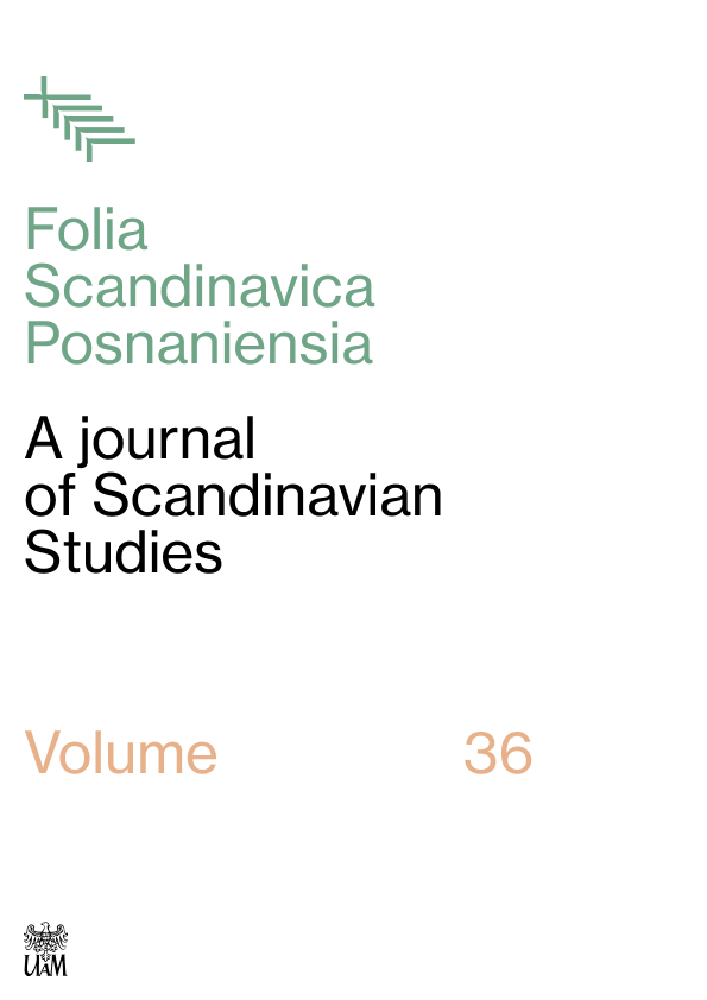
This article discusses the construction [SBJ varda PTCP], which isconsidered an early example of a periphrastic passive, in the extant OldSwedish legal texts. It has been argued that it is a nascent passiveconstruction, different from the fully-fledged passive in Present DaySwedish. Based on a corpus study of all occurrences of the constructionacross Swedish provincial laws I argue that it bears all the hallmarks of agrammaticalized passive construction, with two exceptions. Firstly, itallows a wider choice of thematic roles of the subject, secondly, its mainpragmatic function is inactivization in the sense of Haspelmath (1990).The study is grounded in Diachronic Construction Grammar and utilizesthe typology of thematic roles proposed by Van Valin and LaPolla (1997).
More...
Interview with Heli Laanekask, Szilárd Tibor Tóth, Kristiina Ross, Helle Metslang, Liina Lukas and Kai Tafenau by Külli Habicht and Külli Prillop.
More...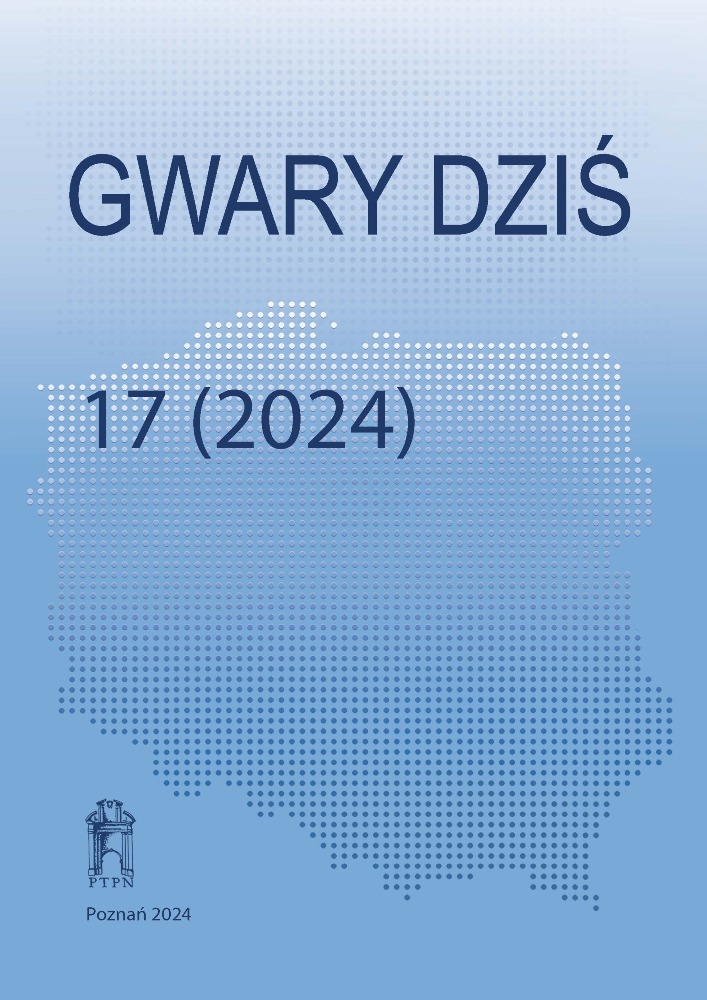
The text discusses the names of dishes present in the public space of Podlasie and Suwałki regions, e.g. me- nus, websites, regional guides, and cook books. The analysis covers regionalisms and micro-regionalisms known to the inhabitants of the regions as well as quasi-regionalisms recognised in other parts of Poland. Another key issue are linguistic contacts in north-eastern Poland, the influence of East Slavonic lan- guages as well as Lithuanian, Yiddish, and Tatar on the formation of the cuisine-related lexical stock; traces of the above languages have survived to this day in the local language.
More...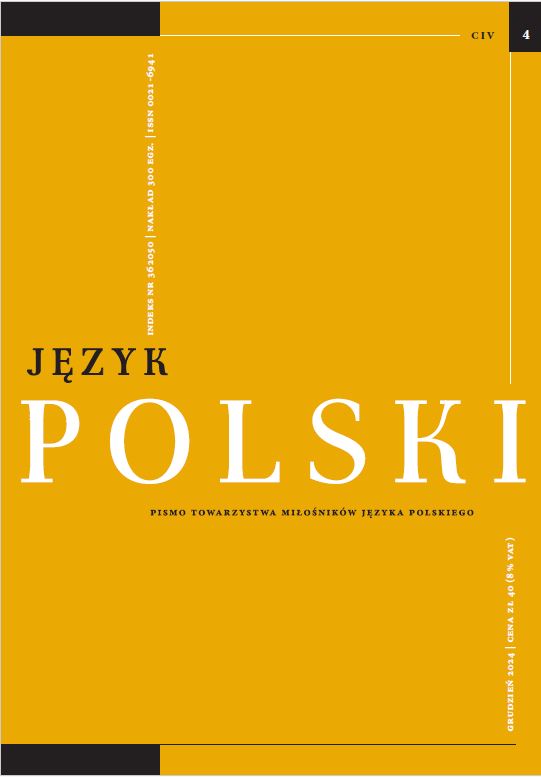
The subject of the article is the phenomenon of the disruption of the agreement of number and/or genderbetween the subject and the ruling in the language of Old Polish apocrypha. This situation occurs whenthere is a quantified subject, a collective subject or expressed by a noun like tłum or lud. A full analysis of thetexts confirmed that ad sensum syntax is still alive in the late 15th/early 16th century, although it is graduallywithdrawing from the language. Differences can be seen both in the frequency of occurrence of ad sensumsyntax with particular nouns and in particular texts. We also pointed out words that have not been includedin the studies so far (tłuszcza, gromada, zastęp), as well as the collective meanings of words such as stroża orziemia. Source analysis of the examples showed that ad sensum syntax already appears in Latin texts.
More...
Documentation and analysis of dialectal names for trees and shrubs in the Yakut language is an urgent task, as dialectal vocabulary is currently undergoing rapid erosion. At the same time, it reflects the peculiarities of cognitive activity, worldview, and cultural interaction with nature among the Sakha people. It also allows us to trace the history of the formation and development of the Sakha language, the Sakha people, and neighboring ethnic groups, since dialectal terms are often words used only in specific areas — zones of contact between several languages. Within the framework of this study, we analyze the names of trees and shrubs in the Sakha language. The selection of this specific lexical group is justified by the fact that comparative-historical linguistics, based on data from various language families, has long established that the names of trees and shrubs, supported by botanical and paleobotanical evidence, can reliably localize the geographical distribution of a language for which they are attested or reconstructed. The article presents a comprehensive linguistic (etymological, including onomasiological) analysis of dialectal names for trees and shrubs in the Yakut language. The analysis of the internal structure of phytonyms revealed that the nomination of trees and shrubs in the Sakha language is most frequently oriented toward the following lexico-semantic groups: zoonyms — 10, color terms — 8, humanrelated terms — 7, household items — 5, and smell — 4. As for the types of motivation, the most commonly used motivational features are: shape — 21, size — 12, color — 10, food quality — 9, and household function — 7.
More...